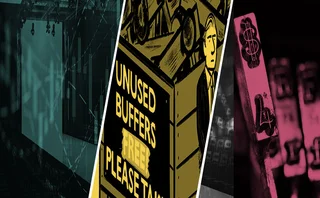
Bad clocks, Ion knocked, Sef-based swaps
The week on Risk.net, November 16–22, 2019

Bad clocks block forex best-ex
To get a good deal in fast-moving forex markets, buy-side firms need to know the time. Some don’t
Banks team up for ‘Ion replacement’ project
Consortium weighs building fixed income software in potential threat to Ion, the dominant vendor
SEC revisits security-based swaps proposal
Sefs expect new trading rules for single-name CDS to be published “pretty soon”
COMMENTARY: Time to upgrade
Technology is improving foreign exchange price prediction in leaps and bounds. But in other instances, forex legacy systems are in dire need of an overhaul.
This week, Credit Suisse revealed it is using deep learning for minute-to-minute price forecasting. Deep learning is a subset of machine learning that attempts to mimic the functioning of the human brain – artificial intelligence in cutting edge action.
Meanwhile, buy-side participants are being urged to scrutinise the accuracy of the timestamps used for transaction cost analysis (TCA) of forex trades – particularly if data is pulled from popular trade booking systems that may lack pinpoint precise time measurement.
One problem is that some popular order management systems display timestamps only to the nearest second – so the buy side cannot always rely on this data for conducting TCA.
Compounding problems with the precision of timestamps is the plethora of tags – expressed through the Fix protocol – that could be used to time a trade. Of around 3,000 tags in the protocol, 26 are timestamps. Fix, the standards body for electronic trading, says it recognises the problems and has offered to set up a working group to look at further tag standardisation.
Just a few weeks ago, Bank of England’s head of markets Andrew Hauser urged the buy side to challenge the competiveness of their liquidity providers. He acknowledged that effective TCA data is “harder to come by” in forex versus other asset classes, however.
Precise trade timestamps for the buy side are critical. Trust between the buy side and sell side in forex suffered when several large dealers in the spot market were involved in front-running scandals.
Dealers also caused controversy during the milliseconds-long ‘last look’ window, which opens once a client order is received. Some banks use that period to pre-hedge incoming client trades – indistinguishable from front-running in some cases – or to reject trades if the market moves in a client’s favour prior to execution.
When Risk.net analysed disclosures from the top 50 liquidity providers, including non-banks, on their last look policies, it found that while most firms adhere to the global forex code, a quarter have no public disclosures on their last look practices, nor would they share them – and more than half refused to publicly state or confirm their approach to hold times.
STAT OF THE WEEK
Globally systemic US banks incurred more loss-making trading days in Q3 than Q2 2019. Goldman Sachs and State Street were the worst performers. The eight US G-Sibs together reported 245 losing days in the three months to end-September, around 31 each on average – as compared with 220 loss-making days the previous quarter and 222 in Q3 2018.
QUOTE OF THE WEEK
“The only thing you know about any environmental taxonomy is that the day you adopt it, it is outdated” – the European Commission’s Olivier Guersent, talking as the European Union’s climate finance strategy – an agreed set of environmental taxonomies – is adopted.
Further reading
Only users who have a paid subscription or are part of a corporate subscription are able to print or copy content.
To access these options, along with all other subscription benefits, please contact info@risk.net or view our subscription options here: http://subscriptions.risk.net/subscribe
You are currently unable to print this content. Please contact info@risk.net to find out more.
You are currently unable to copy this content. Please contact info@risk.net to find out more.
Copyright Infopro Digital Limited. All rights reserved.
As outlined in our terms and conditions, https://www.infopro-digital.com/terms-and-conditions/subscriptions/ (point 2.4), printing is limited to a single copy.
If you would like to purchase additional rights please email info@risk.net
Copyright Infopro Digital Limited. All rights reserved.
You may share this content using our article tools. As outlined in our terms and conditions, https://www.infopro-digital.com/terms-and-conditions/subscriptions/ (clause 2.4), an Authorised User may only make one copy of the materials for their own personal use. You must also comply with the restrictions in clause 2.5.
If you would like to purchase additional rights please email info@risk.net
More on 7 days in 60 seconds
Bank capital, margining and the return of FX
The week on Risk.net, December 12–18
Hedge fund losses, CLS and a capital floor
The week on Risk.net, December 5–11
Capital buffers, contingent hedges and USD Libor
The week on Risk.net, November 28–December 4
SA-CCR, SOFR lending and model approval
The week on Risk.net, November 21-27, 2020
Fallbacks, Libor and the cultural risks of lockdown
The week on Risk.net, November 14-20, 2020
Climate risk, fixing Libor and tough times for US G-Sibs
The week on Risk.net, November 7-13, 2020
FVA pain, ethical hedging and a degraded copy of Trace
The week on Risk.net, October 31–November 6, 2020
Basis traders, prime brokers and election risk
The week on Risk.net, October 24-30, 2020








